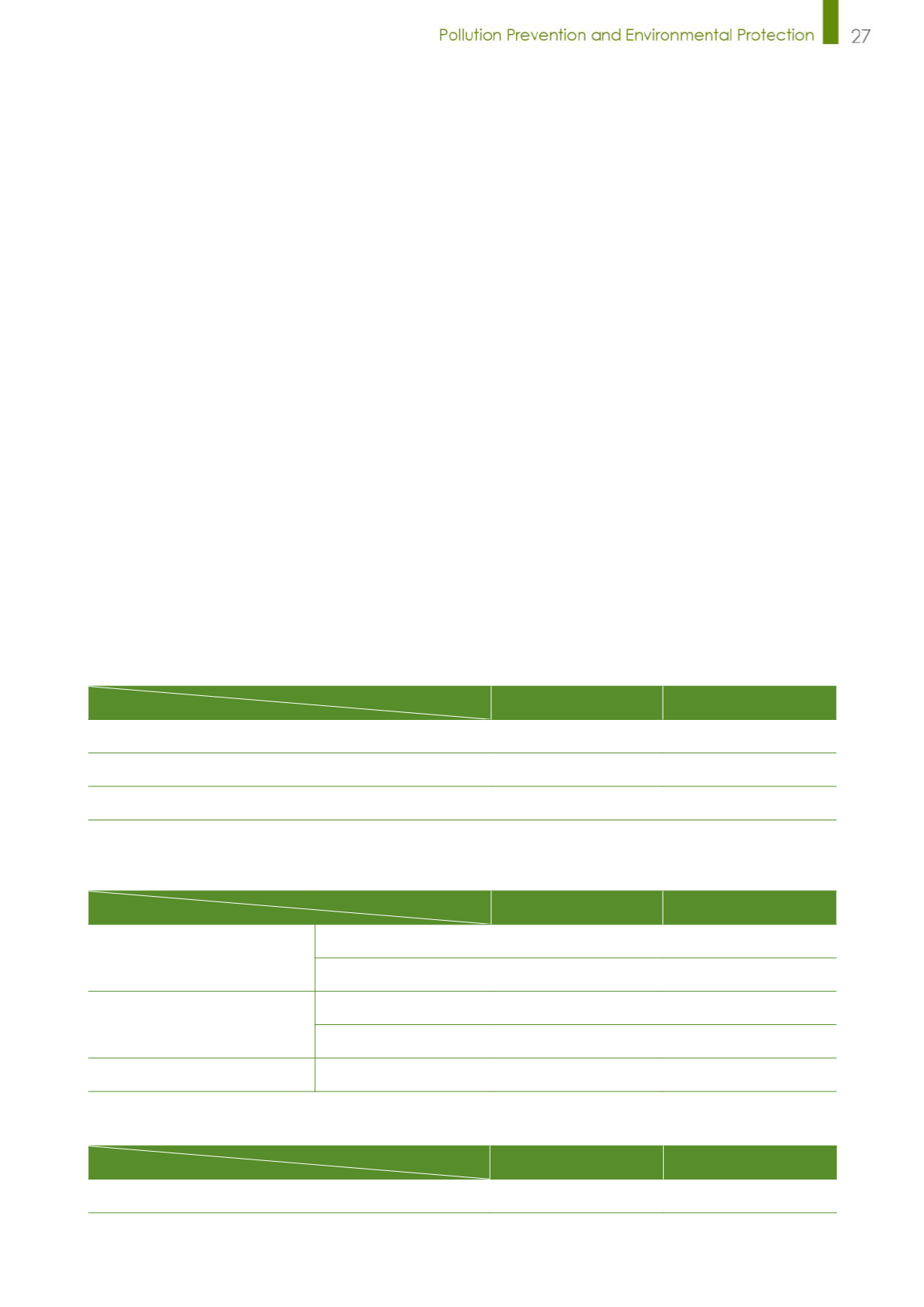
CPC is engaged in a long-term initiative to improve the way in which it handles issues arising from pollution involving waste-water,
air, noise, solid waste and groundwater in the context of fulfilling its CSR commitment and upholding the spirit of sustainable
development. In recent years, the company has also worked on carbon dioxide emission inventory and reduction projects,
and has adopted the best internationally-available control technology and equipment for all of its new investment projects in
order to minimize the pollution caused by production, transportation and storage processes. CPC has also sought to improve
environmental protection by upgrading the quality of its petroleum products.
CPC consistently adheres to an environmental protection policy characterized by legal and regulatory compliance, adherence
to international norms, pollution prevention, energy conservation, waste reduction, continuous improvement, employee
participation, social responsibility, and sustainable development. Since 1989 it has invested more than NT$50 billion in
environmental protection; the ISO 14001 environmental management system has been implemented in all units since 1995 and
22 units had passed certification by the end of 2014. In keeping with global trends, a company-wide environmental accounting
system was set up in 2004 to help improve performance in environmental matters.
Although Taiwan is not a signatory to the 1997 Kyoto Protocol, CPC works in alignment with international environmental
protection practice in reducing the company's greenhouse gas emissions. We have established carbon dioxide reduction targets
and timetables for existing plants, and practice emissions-reduction measures by using low-carbon fuel, conserving energy,
improving equipment efficiency and reducing waste.
A company-wide inventory of greenhouse gases was completed in 2005, and there is an ongoing CO
2
reduction plan. The plan's
CO
2
emission reduction target of 1 million tons by 2009 was surpassed by achieving an actual reduction of 1.22 million tons.
The goal of the second stage of the reduction plan is to cut CO
2
emissions by a cumulative total of 2.3 million tons by 2015; a
reduction of 2.53 million tons had been achieved as of the end of 2014 and work on further reducing emissions continues.
Comparison of CPC Refineries' Environmental Quality and National
Standards
Effluent
Item
Year
2014 quality
Current national standards
Chemical oxygen demand (COD) (ppm)
< 60
100
Oil (ppm)
< 5
10
Suspended solids (ppm)
< 15
30
*Monthly average value
Stack gas
Item
Year
2014 quality
Current national standards
Sulfur oxides (SOx) (ppm)
Gaseous fuel
< 50
100
Liquid fuel
< 250
300
Nitrogen oxides NOx (ppm)
Gaseous fuel
< 100
150
Liquid fuel
< 200
250
Particulate matter (TSP) (mg/Nm
3
)
Set based on displacement
5-100
< 25-500
Noise
Item
Year
2014 quality
Current national standards
Nighttime (dB)
< 50
55


